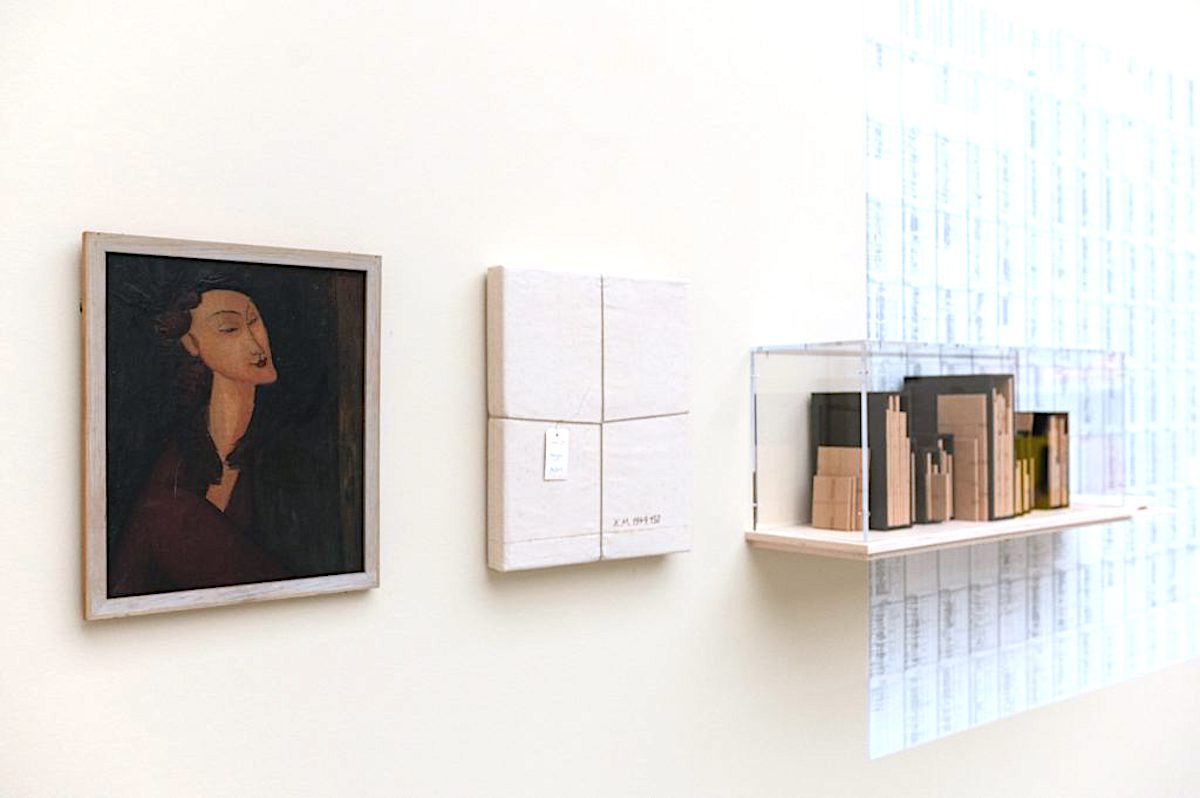Hanover, Germany – In a gesture of resolution, the city of Hanover has returned a painting “Tête de Femme” (1917) by the renowned Italian Modernist painter/sculptor Amedeo Modigliani, to the heirs of Michel Georges-Michel, a French-Jewish painter and writer.
The masterpiece was confiscated by the Nazis in Paris in 1941 and found its way into the collection of a Hanover museum in 1949. Its return on January 26 2024, follows the unanimous recommendation of the city’s cultural committee and marks a pivotal moment in the ongoing discourse surrounding art restitution.
The piece, which resided in the venerable collection of the Sprengel Museum, is currently the centrepiece of a temporary public exhibition curated by the artist Raphaël Denis. Denis’s meticulous research played a pivotal role in identifying the Modigliani masterpiece as a wrongfully appropriated work. The exhibition, titled “Restitution of a Painting,” is set to captivate audiences from February 17 to May 26, culminating in the formal handover of the painting to Georges-Michel’s heirs.
Denis’s groundbreaking discovery unfolded while preparing his “The Göring-Rochlitz Transactions” installation, presently showcased at the Kunsthaus Zurich. This exhibition, albeit controversial, sheds light on the intricate web of transactions involving artworks permanently loaned to the Swiss museum by Emil Bührle, a collector with ties to the Nazi regime. Among these artworks lies the Modigliani portrait, whose journey can be traced back to the collections of the Sprengel Museum.
Michel Georges-Michel, a prominent figure within the artistic enclaves of Montparnasse during the early 20th century, served as both inspiration and protagonist in the literary realms with his novel “Les Montparnos” (1924). His connections to Modigliani imbue the restitution of “Tête de Femme” with profound historical resonance.
Denis’s decade-long exploration into the looting of Jewish-owned art under Nazi occupation has yielded a series of conceptual installations, including his ongoing project, “The Normal Law of Errors.” Through his work, Denis illuminates the injustices Jewish collectors, artists, and dealers suffered during one of history’s darkest chapters. The restitution of Modigliani’s masterpiece is not only a testament to justice but also a poignant reminder of the enduring quest to rectify the cultural injustices of the past.
Amedeo Modigliani, an icon of 20th-century art, was born in Livorno, Italy, on July 12, 1884. He was raised in a Sephardic Jewish family, where his artistic inclinations were encouraged from a young age. Modigliani’s early years were marked by struggles with health issues, including tuberculosis, which plagued him throughout his life.
In pursuit of his artistic ambitions, Modigliani moved to Florence in 1902 to study at the Academy of Fine Arts. His time in Florence exposed him to Renaissance masterpieces and classical forms, later influencing his distinctive style. However, Modigliani was drawn more towards the avant-garde and the bohemian lifestyle.
In 1906, Modigliani relocated to Paris, the epicentre of the modern art movement. Immersed in the vibrant artistic community of Montmartre and Montparnasse, he found inspiration amidst fellow artists, poets, and intellectuals. Modigliani’s artistry flourished as he absorbed influences from African sculpture, Byzantine art, and the works of Paul Cézanne and Henri de Toulouse-Lautrec.
Modigliani’s artistic vision manifested in his signature style characterized by elongated figures, almond-shaped eyes, and sensual lines. His portraits, particularly of women, exude a timeless elegance and an ethereal quality that still captivates viewers.
Despite his undeniable talent, Modigliani faced personal and financial hardships, exacerbated by his tumultuous lifestyle and struggles with addiction. However, his dedication to his craft remained unwavering.
Tragically, Amedeo Modigliani’s life was cut short at the age of 35 due to complications from tuberculosis and substance abuse. His untimely death in 1920 deprived the art world of visionary talent, but his legacy endures through his timeless artworks, which continue to inspire and resonate with audiences worldwide.
Today, Modigliani’s paintings and sculptures are celebrated for their expressive power, exploration of the human form, and contribution to modern art history’s rich tapestry. Amedeo Modigliani’s enduring influence cements his place as one of the most iconic figures of the 20th-century art movement.
Top Photo: Raphaël Denis installation at Sprengel Museum in Hanover, Germany. Photo: © Herling/Herling/Werner, Sprengel Museum Hannover. Courtesy of Raphaël Denis & Galerie Sator.


